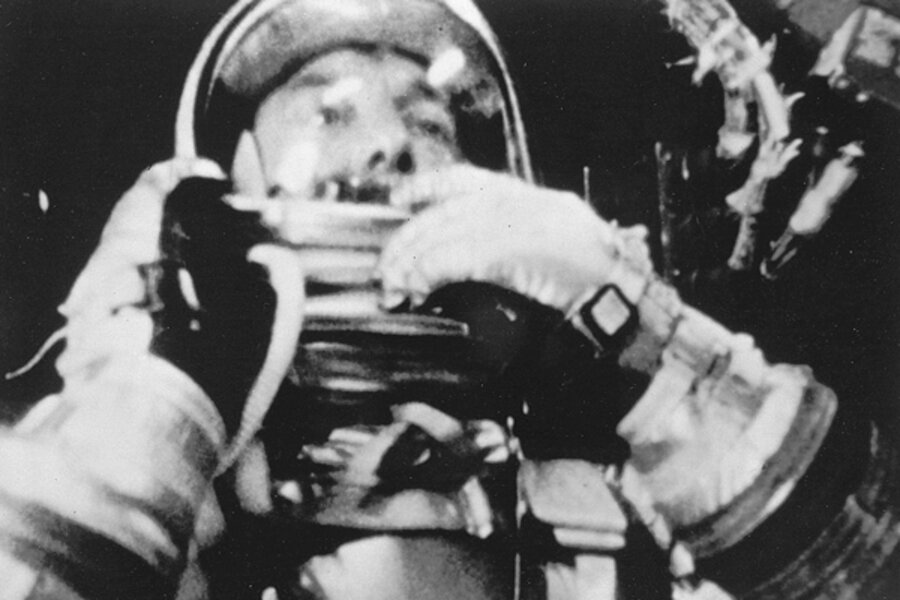Milestones in U.S. manned spaceflight
Loading...
May 5, 1961: Astronaut Alan Shepard Jr. becomes the first American in space with a 15-minute suborbital flight.
May 25, 1961: President John F. Kennedy declares a national goal of landing a man on the moon within 10 years.
Feb. 20, 1962: John Glenn becomes the first American to orbit Earth.
June 3, 1965: Edward White II becomes the first American to walk in space, attached to a 23-foot tether.
Jan. 27, 1967: Three astronauts die when a flash fire erupts in an Apollo command module during a ground test at Kennedy Space Center in Florida.
Dec. 21, 1968: Apollo 8 becomes the first manned spacecraft to orbit the moon.
July 20, 1969: Neil Armstrong and Edwin (Buzz) Aldrin become the first men to walk on the moon.
Dec. 7-19, 1972: Eugene Cernan and Harrison Schmitt conclude the longest and last stay on the moon – 75 hours – with the Apollo 17 mission.
May 14, 1973: US launches Skylab, its first orbiting laboratory.
July 17-19, 1975: US astronauts and Soviet cosmonauts conduct joint Apollo-Soyuz test project, docking together in space for two days.
April 12, 1981: Shuttle Columbia becomes first winged spaceship to orbit Earth and return to an airstrip landing.
June 18, 1983: Sally Ride becomes first American woman in space (20 years after the first Soviet woman).
Feb. 7, 1984: Bruce McCandless performs man's first untethered spacewalk from the Challenger space shuttle.
Jan. 28, 1986: Shuttle Challenger breaks apart 73 seconds after launch, killing its seven crew members, including teacher Christa McAuliffe.
March 14, 1995: Norman Thagard, riding in a Russian rocket, becomes the first American to visit Russian space station Mir.
June 29, 1995: Atlantis docks with Mir in first shuttle-station hookup.
Sept. 26, 1996: Astronaut Shannon Lucid sets a US record for time in space – 188 days – after returning from Mir.
May 29, 1999: Discovery becomes the first shuttle to dock with the International Space Station (ISS).
Nov. 2, 2000: An American and Russian crew begins living aboard the ISS.
Feb. 1, 2003: Shuttle Columbia breaks apart over Texas 16 minutes before it was supposed to land in Florida, killing all seven crew members.
April 2003: The Ansari X PRIZE Foundation is set up to encourage privately funded human spaceflight.
June 21, 2004: SpaceShipOne becomes the first private manned spacecraft to fly to the edge of space and back. It later wins the $10 million Ansari X PRIZE.
Aug. 9, 2005: Shuttle Discovery ends a 14-day mission, the first since the Columbia tragedy 2-1/2 years earlier, though a chunk of foam that fell from the fuel tank after liftoff prompts NASA to ground the fleet again.
July 4, 2006 - Feb. 24, 2010: Nineteen shuttle flights taxi to and from space, most of them ferrying crew and parts to the ISS.
May 16, 2011: Last scheduled flight of space shuttle Endeavour and the penultimate flight in the shuttle program.
June 28, 2011: Last scheduled flight of Atlantis, ending the US shuttle program.





